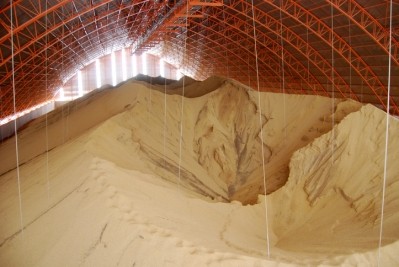Argentina sees soy production increase as export taxes rise

The US Department of Agriculture released new details regarding feed crop production in Argentina and changing export taxes in a series of reports from an agricultural attaché through its Foreign Agricultural Service (FAS).
Overall, improving weather conditions have boosted anticipated soybean production, the agricultural attaché said. “2019/20 Soybean production forecast is raised to 54.1 Million Metric Tons (MMT), up 1.1 MMT from December, on positive growing conditions for first crop soybeans across Argentina.”
Producers continue to be concerned about changes to how exported oilseeds and grains are taxed, he added.
“On Wednesday, March 4, 2020, the Government of Argentina announced adjustments to its export tax regime,” the attache said. “Key modifications to existing rates included an increase from 30% to 33% for soybeans and soybean products.
“Wheat, corn, and sorghum export taxes remain at 12%,” he added. “Other commodities saw a reduction or maintenance of their current export tax rates.”
Raising taxes on exported feed ingredients
Following the inauguration of Argentinians President Alberto Fernandez, the president raised export taxes on both oilseeds and grains using a pre-existing legal authority, the attaché said.
“Shortly thereafter, Pres. Fernandez gained the authority to further increase export taxes as part of an emergency economic law, the ‘Social Solidarity and Production Reactivation’ act,” he said. “The Fernandez government is seeking additional revenue to finance new stimulus measures for social expenditures as well as manage existing fiscal deficit and service outstanding debt obligations.”
The government used the newly established powers to again change the export tax regime last week, he said. The new decree raised the export tax for soybeans and soybean products to 33% but reduced or maintained the tax on most value-added products or for labor-intensive industries.
Previously, soybeans and soybean products had a 30% export tax, he said.
“Information issued by the Ministry of Agriculture indicates exporters selling soybean and soybean products sourced from farmers producing smaller volumes could pay anywhere from 30-20% in export taxes depending upon the size of the farm from which the soybeans were sourced,” the attaché said. “Soy and soy products sourced from farmers producing more than 1,000 T (36,743 bushels) of soybeans per year will continue to pay 33%.”
The new taxes are considered a way to boost overall revenue and have an emphasis on taxing commercial farms, which grow the majority of the grains and oilseeds in Argentina, he said. The system reduces some of the burdens on smaller-scale farms growing specialty crops.
“National agricultural organizations as well as grassroots and local farm leaders had strongly resisted the rise in export taxes,” he said. “By ‘segmenting’ the export taxes in this manner, the government may be seeking to prevent unified farm resistance by dividing agricultural interest groups based upon commodity and farm size.”
In addition, new provincial taxes passed in January are added to shipments going through ports in Buenos Aires, the attaché said. “The new law stipulates a tax of $47 ARG pesos for each ton exported, $139 ARG pesos for each ton imported (respectively $0.79 and $2.33 USD at official exchange rates).”
The higher taxes may have a negative influence on producer profitability by lower prices received by producers and increasing input costs, he said. “While much ultimately depends on trucking costs at harvest, farmers surveyed on this visit registered their intention to market their row crops through ports such as Rosario in the Province of Sante Fe to avoid the tax.”
Soybean and oilseed production
Rains in January and February provided needed moisture for most of the soybean production area, the attaché said.
“First crop soybeans in the northern portions of the core-region are filling pods and are approaching harvest while in the south floration continues,” he said. “Yields are projected to be above average.”
The harvested area may be reduced by localized flooding, he said. But, growing conditions have prompted the production estimate for 2019/20 to increase 1.1m metric tons (MT) or by 2.1% from earlier forecasts.
However, questions are starting to be raised regarding second crop soybean production, he said.
Sunflower production is also anticipating higher yields, but the increase is not expected to make up for the decline in planted acres, the attaché said. Production is forecast to be 3.3m MT.
“The dry spring in peanut producing regions of the Provinces of Cordoba, San Luis, and La Pampa delayed peanut planting somewhat, but subsequent rains have improved crop conditions,” he said. “For peanuts, Post maintains 2019/20 production at 1m MT.”












